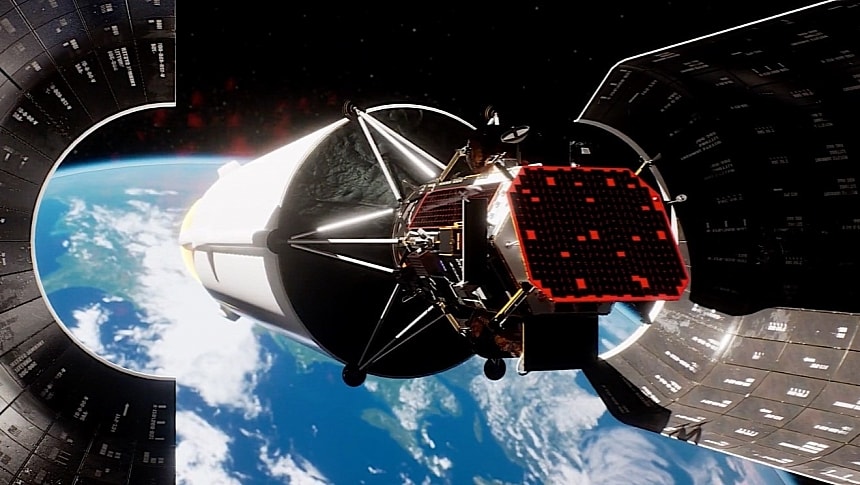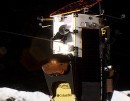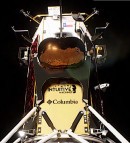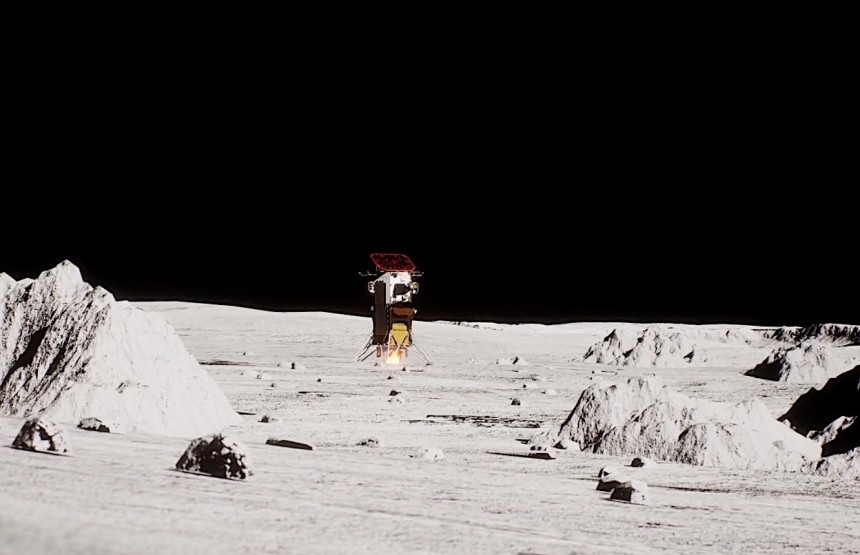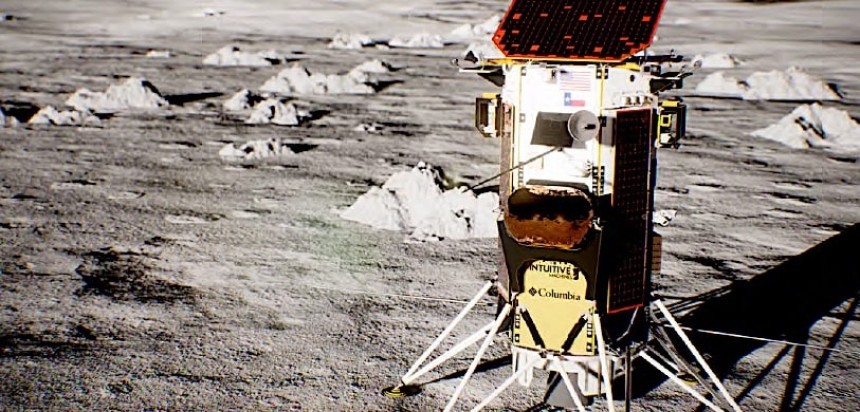In January 2024 the first-ever mission of the American space agency's Commercial Lunar Payload Services (CLPS) took off. Shortly after it failed, taking with it NASA's dreams of returning to the surface of the Moon after more than half a century. Yet here we are, on the eve of NASA and its partners having another shot at it.
That first CLPS mission was centered around the Peregrine Moon lander, a piece of tech developed by private company Astrobotic. It was supposed to take to the surface of Luna a series of instruments meant to collect data on the lunar radiation environment, the composition of the lunar soil, the Moon's surface temperature, and the presence of water.
A problem with the ship's fuel system manifested itself shortly after take-off, and snowballed into something that effectively killed the mission and eventually sent the Peregrine burning in Earth's atmosphere.
That's something we all hope will not happen with the second mission of the CLPS program, the IM-1. This one is run by private company Intuitive Machines, and it too centers around a lunar lander packed to the teeth with science instruments.
The lander's family is called the Nova-C, but the exact example that will travel to the Moon in this first flight is called Odysseus, after the Greek king of Ithaca, one of the favorite characters for ancient Greek poet Homer.
The thing is medium-sized, standing at a height of 14 feet (4.3 meters). It weighs 1,488 pounds (675 kg) and can carry just 286 pounds (130 kg) of cargo, but that's more than enough for it to deliver the required science to the Moon.
The lander's cargo manifest includes six private science pieces of technology, all of them of equal importance to their senders, and some of them even for the evolution of our species.
Columbia Sportswear has cargo on this lunar mission, as it is using the Omni-Heat Infinity thermal reflective insulation it generally deploys on clothes to shield the Odysseus lander from the extreme temperatures on the Moon. In doing so, Columbia will also get a sense of how the tech works in space.
American artist Jeff Koons is represented on the mission as well, through something called the Moon Phases. We're talking about 125 unique artworks, miniature stainless steel balls installed in a cube, and each dedicated to "individuals who made important accomplishments in human history."
The International Lunar Observatory Association will launch on the Odysseus the ILO-X, a suite of instruments that comprises a dual camera. This one will be used to snap the first images of the galaxy's center as seen from the surface of the Moon.
A group that calls itself Galactic Legacy Labs has embarked on a mission to establish a lunar repository of human knowledge and history, backing the Arch Mission Foundation similar goals. It will send to the Moon with the IM-1 flight something called Lunagrams – in essence private text, images, music videos or other video files stored in the same place with "cultural archive datasets.”
Then, data storage solutions provider Lonestar will have on board a tech demonstrator "for secure premium data storage and edge processing."
A project of the Embry-Riddle Aeronautical University will probably steal all the spotlight of the Intuitive Machines lunar landing, at least when it comes to commercial payloads. A team from this university devised a camera system called EagleCam that will "capture the world's first-ever third-person picture of a spacecraft making an extraterrestrial landing."
How will it do that? Well, when the lander is 100 feet (30 meters) above the Moon's surface the camera will fly off, snapping images of the landing Odysseus and sending them back to Earth for us all to marvel at.
All of the above commercial payloads will share the same space with no less than six other NASA-backed experiments, including the Lunar Node-1 we discussed no long ago – a potential solution to the lunar navigation problems posed by the extreme environment there.
The Odysseus is scheduled to lift off from the Kennedy Space Center on Valentine's Day 2024 at 12:57 AM EST. The rocket that will carry it to space is a SpaceX Falcon 9.
The lander will take nine days to reach the Moon. It will descend upon a region of the satellite called Malapert A, at the Moon's south pole and close to the Malapert Massif that is on the shortlist (together with 12 other locations which we will discuss separately) of places being considered as a potential landing site for the Artemis III astronaut mission.
If it makes it up there, the piece of hardware will become the first American Moon lander to make a soft touchdown on the surface of the satellite since the end of the Apollo program in 1972. The expected duration of the mission while on the surface is just seven days, as the arrival of the lunar night will render the lander useless.
A problem with the ship's fuel system manifested itself shortly after take-off, and snowballed into something that effectively killed the mission and eventually sent the Peregrine burning in Earth's atmosphere.
That's something we all hope will not happen with the second mission of the CLPS program, the IM-1. This one is run by private company Intuitive Machines, and it too centers around a lunar lander packed to the teeth with science instruments.
The lander's family is called the Nova-C, but the exact example that will travel to the Moon in this first flight is called Odysseus, after the Greek king of Ithaca, one of the favorite characters for ancient Greek poet Homer.
The thing is medium-sized, standing at a height of 14 feet (4.3 meters). It weighs 1,488 pounds (675 kg) and can carry just 286 pounds (130 kg) of cargo, but that's more than enough for it to deliver the required science to the Moon.
The lander's cargo manifest includes six private science pieces of technology, all of them of equal importance to their senders, and some of them even for the evolution of our species.
American artist Jeff Koons is represented on the mission as well, through something called the Moon Phases. We're talking about 125 unique artworks, miniature stainless steel balls installed in a cube, and each dedicated to "individuals who made important accomplishments in human history."
The International Lunar Observatory Association will launch on the Odysseus the ILO-X, a suite of instruments that comprises a dual camera. This one will be used to snap the first images of the galaxy's center as seen from the surface of the Moon.
A group that calls itself Galactic Legacy Labs has embarked on a mission to establish a lunar repository of human knowledge and history, backing the Arch Mission Foundation similar goals. It will send to the Moon with the IM-1 flight something called Lunagrams – in essence private text, images, music videos or other video files stored in the same place with "cultural archive datasets.”
Then, data storage solutions provider Lonestar will have on board a tech demonstrator "for secure premium data storage and edge processing."
A project of the Embry-Riddle Aeronautical University will probably steal all the spotlight of the Intuitive Machines lunar landing, at least when it comes to commercial payloads. A team from this university devised a camera system called EagleCam that will "capture the world's first-ever third-person picture of a spacecraft making an extraterrestrial landing."
All of the above commercial payloads will share the same space with no less than six other NASA-backed experiments, including the Lunar Node-1 we discussed no long ago – a potential solution to the lunar navigation problems posed by the extreme environment there.
The Odysseus is scheduled to lift off from the Kennedy Space Center on Valentine's Day 2024 at 12:57 AM EST. The rocket that will carry it to space is a SpaceX Falcon 9.
The lander will take nine days to reach the Moon. It will descend upon a region of the satellite called Malapert A, at the Moon's south pole and close to the Malapert Massif that is on the shortlist (together with 12 other locations which we will discuss separately) of places being considered as a potential landing site for the Artemis III astronaut mission.
If it makes it up there, the piece of hardware will become the first American Moon lander to make a soft touchdown on the surface of the satellite since the end of the Apollo program in 1972. The expected duration of the mission while on the surface is just seven days, as the arrival of the lunar night will render the lander useless.
